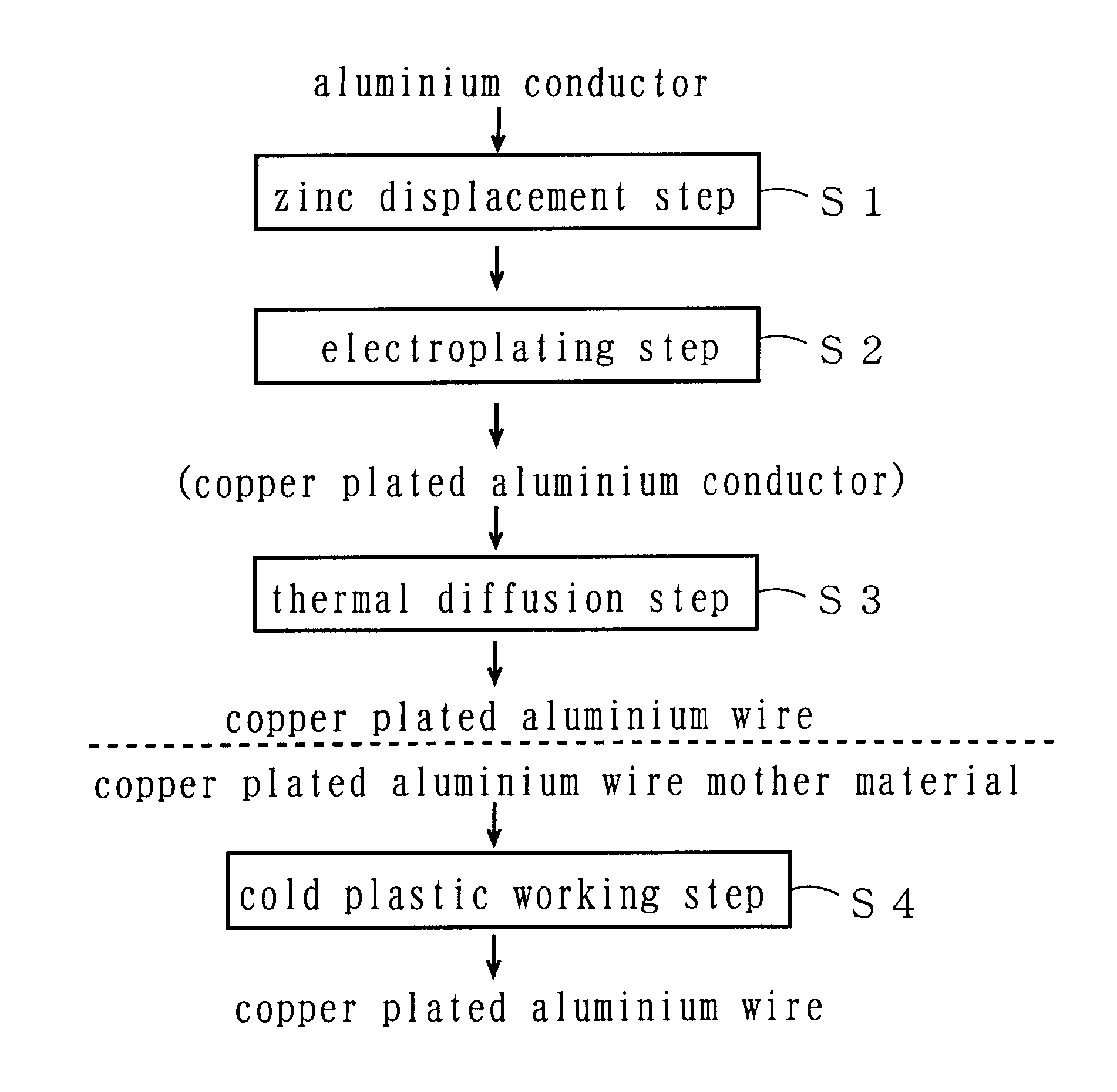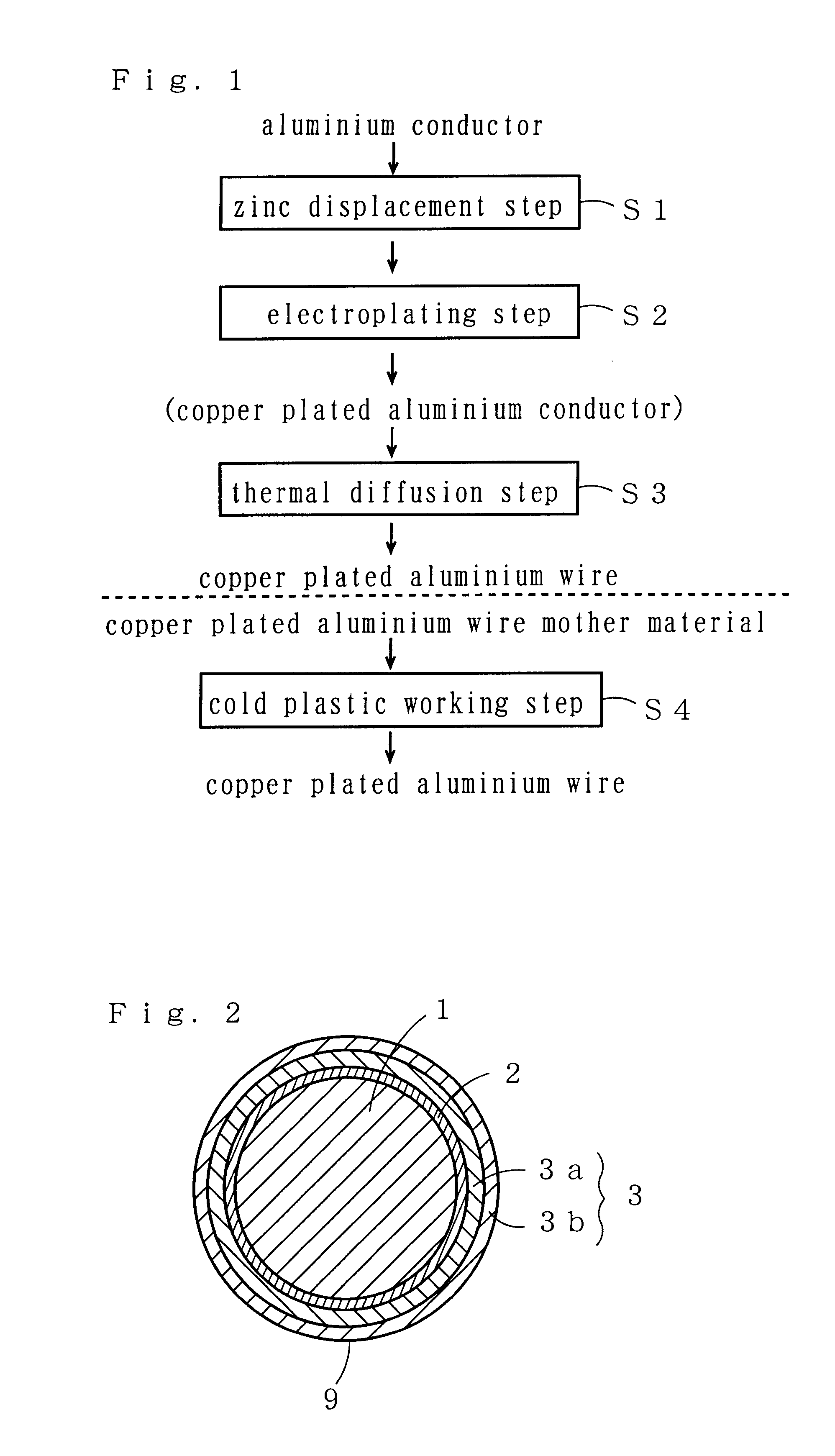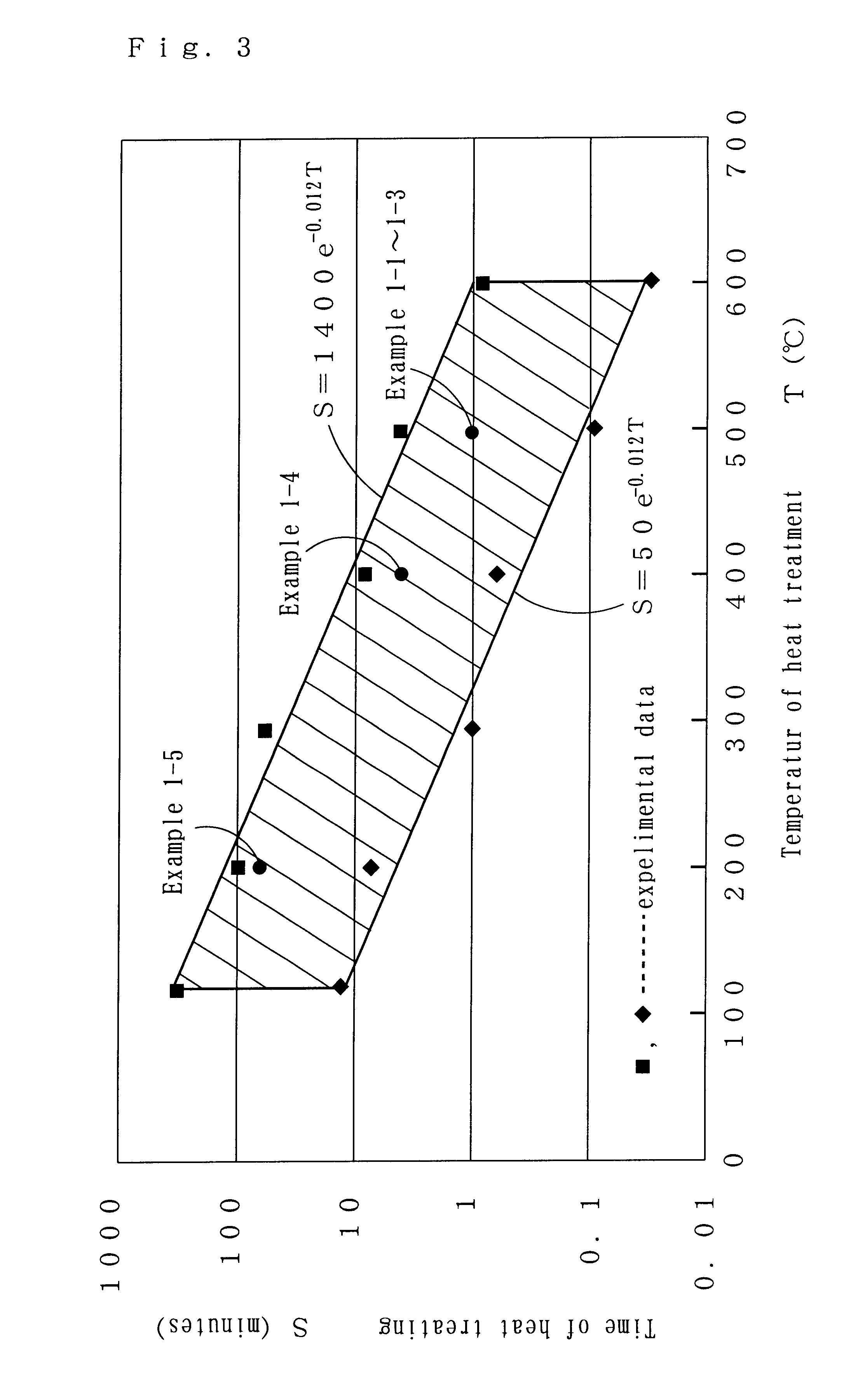Composite lightweight copper plated aluminum wire
a technology of aluminum wire and aluminum plated, which is applied in the manufacture of copper/conductor, solid-state devices, semiconductor devices, etc., can solve the problems of low adhesion at the interface between aluminum conductor and copper layer produced by plating, electrochemically unfavorable electric potential of aluminum conductor, and production of disconnections
- Summary
- Abstract
- Description
- Claims
- Application Information
AI Technical Summary
Problems solved by technology
Method used
Image
Examples
example 1-1
The method started with a zinc displacement step S1 of forming a zinc thin layer 2 by zinc displacement over the surface of an aluminum conductor 1, which was made of a 0.90 mm diameter wire of 99.0% pure aluminum and had been degreased and etched.
An electroplating step S2 followed in which the aluminum conductor 1 coated with the zinc thin layer 2 was immersed in a strike copper plating bath at a temperature of 40.degree. C. and energized for one minute under a plating condition of 2 A / square-dm current density to develop a copper plating layer 3a of 2 micrometers in thickness on its surface. In succession, the same was immersed in a copper sulfate plating bath at a temperature of 40.degree. C. and energized for forty minutes under a plating condition of 5 A / square-dm current density to develop a thick copper plating layer 3b of 40 micrometers in thickness on its surface. Hence, a resultant copper coated aluminum conductor had a copper coating 3 composed of the two plating layers 3...
example 1-2
A copper plated aluminum wire 9 of 0.10 mm in outer diameter was fabricated from an aluminum conductor 1, which was a 0.90 mm diameter wire of Al--Mg alloy containing 95.0% pure aluminum, by the same manner as of Example 1-1.
example 1-3
A copper plated aluminum wire 9 of 0.10 mm in outer diameter was fabricated from an aluminum conductor 1, which was a 0.90 mm diameter wire of Al--Mg--Si alloy containing 97.0% pure aluminum, by the same manner as of Example 1-1.
PUM
| Property | Measurement | Unit |
|---|---|---|
| thickness | aaaaa | aaaaa |
| thickness | aaaaa | aaaaa |
| thickness | aaaaa | aaaaa |
Abstract
Description
Claims
Application Information
 Login to View More
Login to View More - R&D
- Intellectual Property
- Life Sciences
- Materials
- Tech Scout
- Unparalleled Data Quality
- Higher Quality Content
- 60% Fewer Hallucinations
Browse by: Latest US Patents, China's latest patents, Technical Efficacy Thesaurus, Application Domain, Technology Topic, Popular Technical Reports.
© 2025 PatSnap. All rights reserved.Legal|Privacy policy|Modern Slavery Act Transparency Statement|Sitemap|About US| Contact US: help@patsnap.com



